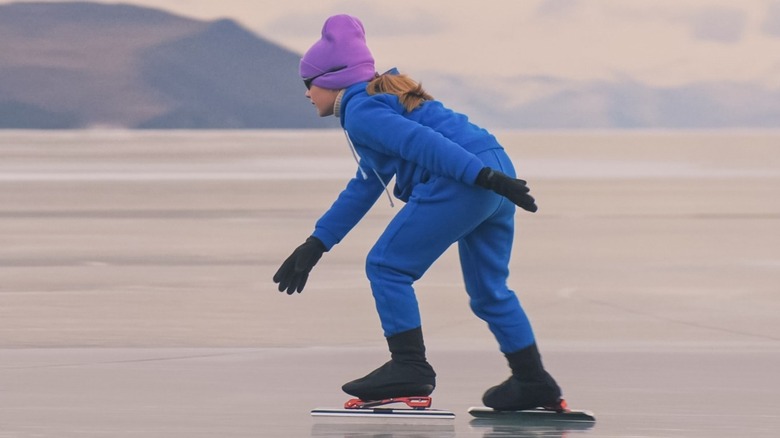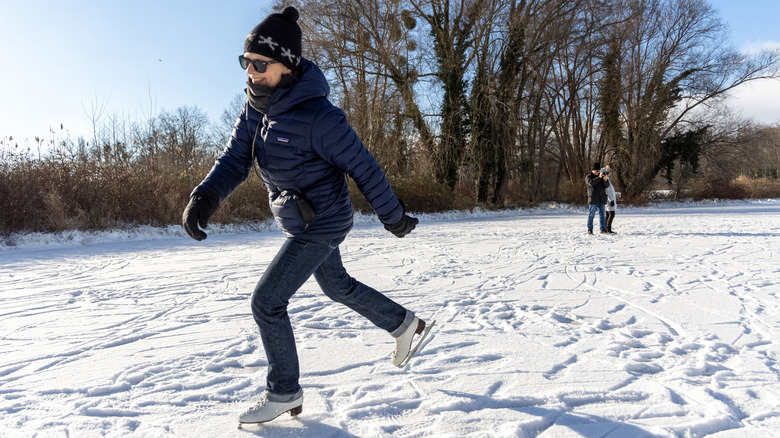Why Ice Skating Is The Method Of Exercise You've Been Missing
We've all been there. It's still dark, and it's cold out. You need to go for your morning run, but it's snuggly under the covers. If getting up for a morning run during colder months seems like no fun, how about shaking up your routine with some ice skating instead? You'll be joining the roughly 10 million Americans who enjoy ice skating each year (via Statista). However, ice skating did not begin as the sport or recreation we know today.
According to Smithsonian Magazine, it is believed that the original version of ice skates were constructed from animal bones. They were first introduced during the Bronze Age in Eastern Europe as a way to travel during the winter months. Using skates as a means of travel continued into the 15th century in the Netherlands. Canals that irrigated farmland during the summer became ice skating super highways during the winter months, according to Federico Formenti, a physiologist and sports scientist at King's College London. "They were as popular there as cars are in America today," Formenti told Smithsonian Magazine. "That was the stimulus to try new solutions to improve the skates, so people could travel more rapidly."
The core reason ice skating benefits your health
Popular sports, such as ice hockey and figure skating, may have replaced ice skating as a means to get across the frozen tundra. However, this doesn't mean you have to be Wayne Gretzky or Michelle Kwan to reap all the fitness benefits that ice skating has to offer.
Whether you are a beginner or more advanced skater, ice skating is a great way to engage your core and target your lower body muscles. Dr. M. Kathryn Steiner, an adult physician for the 2017 Skating Academy of Boston, tells New England Baptist Hospital that ice skating improves balance, builds up endurance, and can help melt off the pounds. "The longer you skate and the harder you skate will lead to increased calories burned, making ice skating a good way to maintain or lose weight," Dr. Steiner told the news source.
If you're new to the activity or out of practice, Peter Zapalo, the director of sports science and medicine for U.S. Figure Skating, tells Vogue that it's important to do some stretches before and after you skate. He suggests leg lunges, high kicks, and alternately standing on one foot for 30 seconds while brushing your teeth. As far as a post-skate cool-down regimen, Zapalo notes it's important to be mindful of your body. "If your body is not used to skating, you want to take some extra time for passive stretching when you get off the ice," he says.


